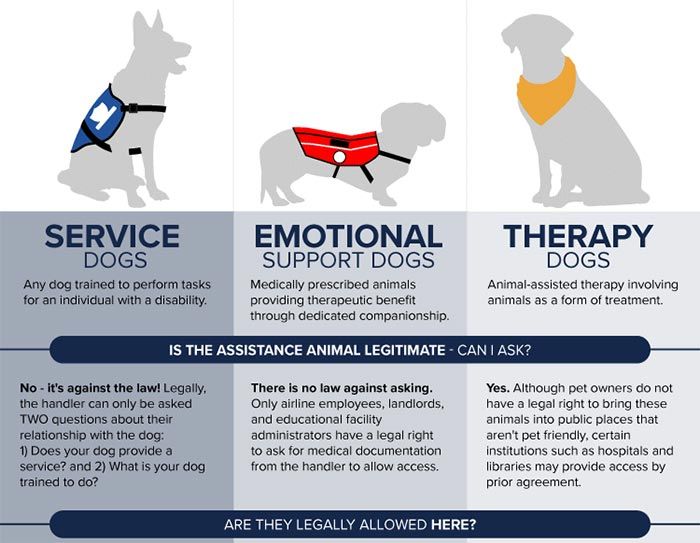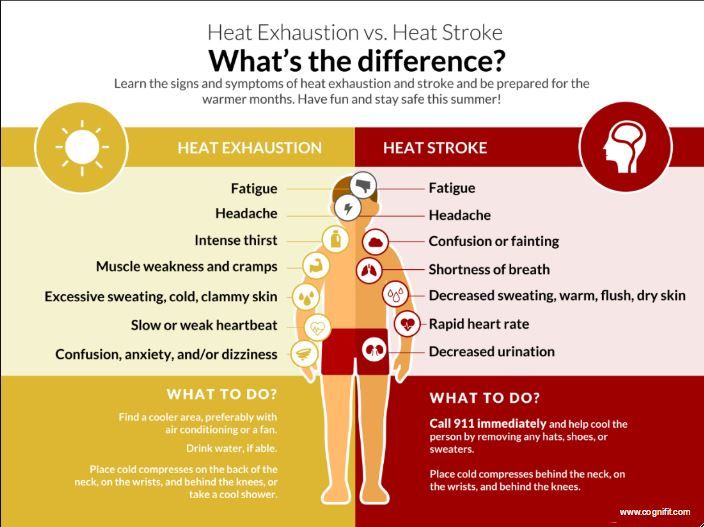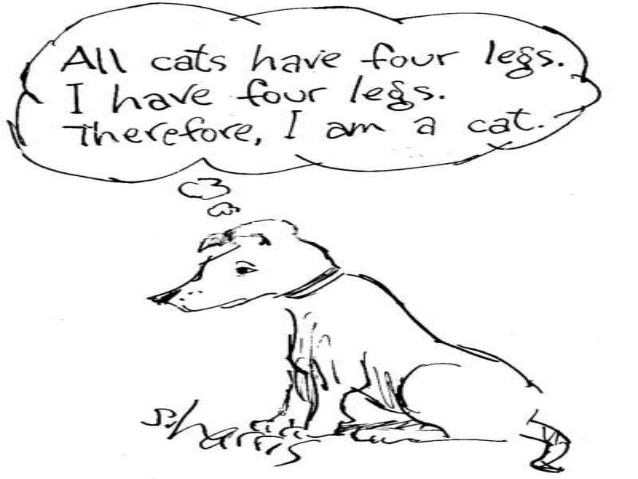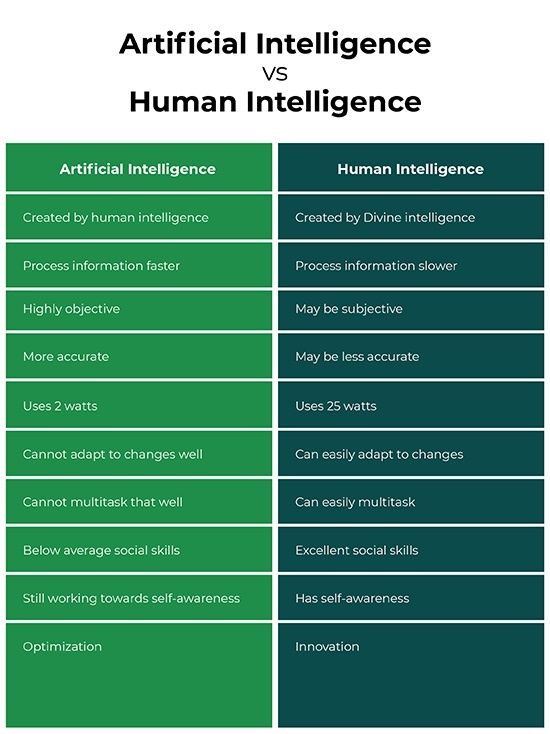Therapy animals benefits
How it works, benefits, and more
Animal therapy or pet therapy refers to the use of animals as a way to help people cope with and recover from some physical and mental health conditions.
Depending on the function of the therapy, people may choose from various animals, including dogs, horses, and birds. Animal assisted therapy is not the only therapeutic option in most cases, but it can be a good choice for some people.
Keep reading to learn more, including how it works, who it may benefit, and more.
Share on PinterestInteracting with professionally trained dogs, horses, and birds may help people with physical or mental health conditions.Animal therapy, also called pet therapy or animal assisted therapy, refers to various services using animals to help people with specific physical or mental health conditions.
Animals may be able to provide comfort, alert others if someone is in danger, or even perform direct actions to help a person’s condition when they are in need. It is a type of complementary or alternative therapy. It should enhance but not replace other treatments.
On the whole, the goal of animal assisted therapy is to alleviate or help people cope with some symptoms of various conditions where possible.
The exact type of animal therapy can vary greatly depending on what condition the person has, the type of animal, and what kind of therapy they provide.
Animal therapy builds on a concept called the human-animal bond, which describes people’s desire to interact with and relate to animals. For many people, by interacting with a friendly animal, they can form a bond with them. This bond can produce a calming state in the person.
This bond itself may help the person in several ways, such as:
- reducing boredom
- increasing movement and activity through walks and play
- providing companionship and decreasing loneliness
- increasing social interactions
- improving mood and general well-being
The positive interactions with an animal may lead to benefits in the mind and body, such as reduced stress and an overall more balanced mental and emotional state.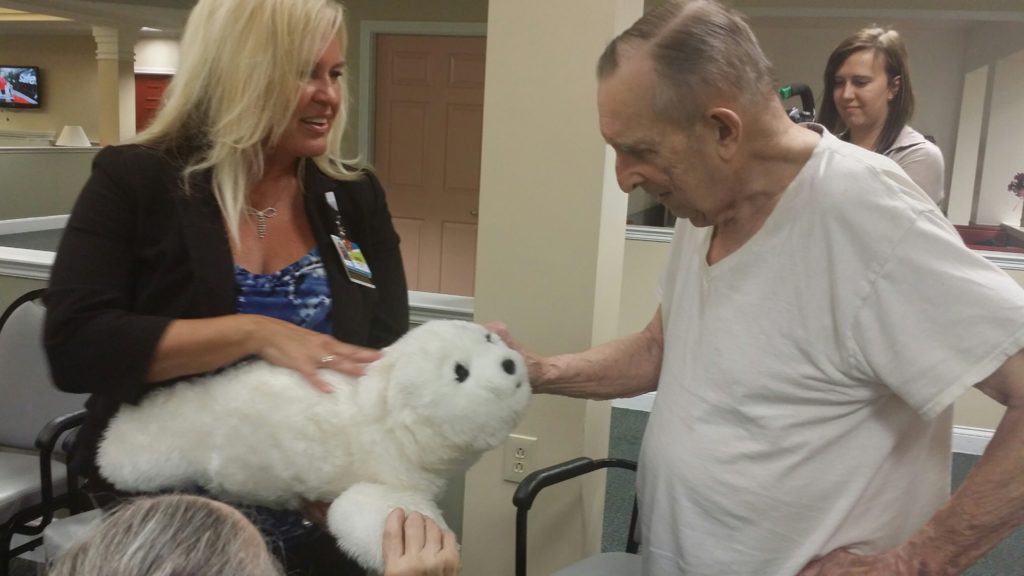
Animal therapy partially uses this bond in a directed way to achieve the goals of the therapy.
Animal therapy can have several goals, and these will determine how it works. The type of therapy and target for this therapy may change depending on the condition and the type of aid that a person needs. Some examples include:
- providing comfort and reducing levels of pain
- improving movement or motor skills
- developing social or behavioral skills
- increasing motivation toward activities such as exercise or interacting with others
The process of animal therapy itself typically involves the animal’s handler, who is often the owner, bringing the animal to each session. The handler will work under a doctor’s guidance to help the person achieve the goals of their therapy.
A number of organizations train handlers and connect them to healthcare providers. Many handlers work as volunteers. Before getting approval for therapy use, both the animal and the handler will have to go through various certifications with these groups and organizations.
The handler must generally pass an instructional course on how to interact with people and perform the types of therapies that they may provide.
The animal also has to go through certain checks. These will include checking immunization records and performing physical exams to ensure that the animal is generally healthy and free of disease. They will also have to undergo temperament testing to make sure that they behave properly with both the handler and other people.
Additionally, the pair will go through obedience training. This rigorous testing and certification ensures the safety and professionalism of everyone involved and helps give the person access to the best therapy sessions possible.
It is important to note that a therapy dog is not the same as a service dog and does not have all of the same rights. For example, a therapy dog cannot accompany a handler into a business establishment.
Animal therapy may help people with a range of health issues.
Mental health
The Pet Partners organization note that these therapies may improve many important markers of stress and disorder by:
- decreasing anxiety and stress
- decreasing perceptions of pain
- reducing feelings of fear or worry
- increasing feelings of social support
- providing motivation, stimulation, and focus
A review study notes that animal therapy appears to provide general benefits for both physical and psychological health.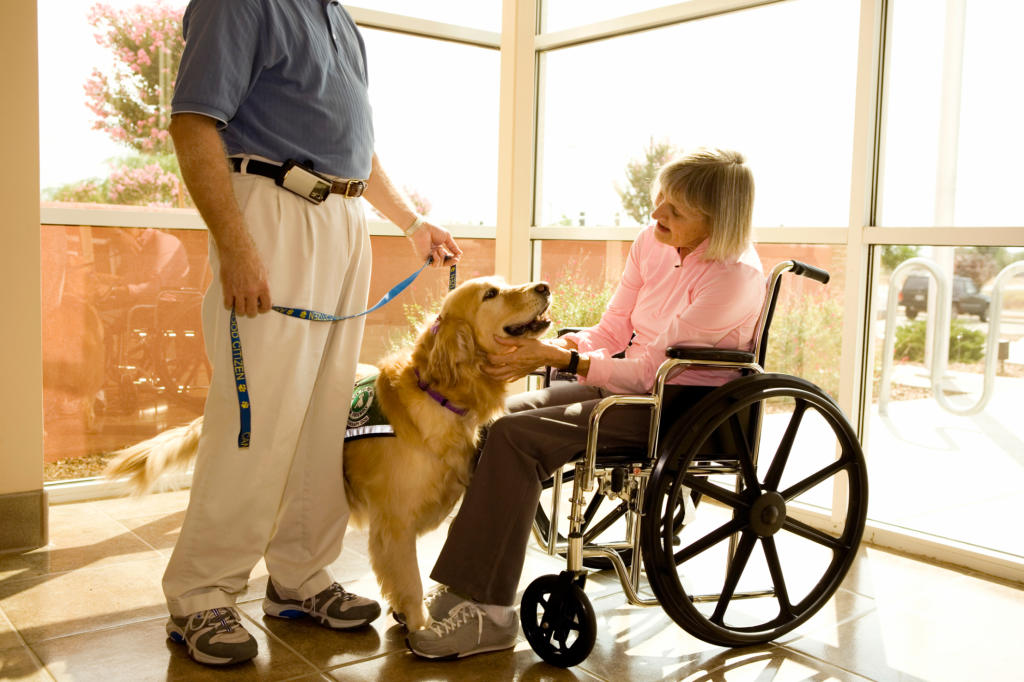 Evidence for animal assisted therapy appears strongest for markers of anxiety and depression in the widest range of people.
Evidence for animal assisted therapy appears strongest for markers of anxiety and depression in the widest range of people.
The researchers note that the therapy may be beneficial for people from many different age groups with various conditions. For example, a 2019 study found that the use of therapy dogs improved the efficacy of mental health treatments among adolescents.
Together, these factors may make the therapy helpful for aspects of conditions such as:
- dementia
- depression
- anxiety
- autism spectrum disorder
- attention deficit hyperactivity disorder (ADHD)
- schizophrenia
Studies involving the use of therapy horses and dogs have shown that animal therapy might also help alleviate the symptoms of post-traumatic stress disorder (PTSD).
Some people going through rehabilitation for a drug use disorder may also respond well and have a greater sense of well-being when working with an animal.
Physical health
Some forms of animal therapy may also help with markers of physical conditions, including:
- epilepsy
- heart failure
- pain from cancer treatment
- postoperative recovery
- recovery after a major stroke or another condition that causes a person to lose motor skills
Working with an animal in these cases may motivate the person to continue therapy, boost their mood, and reduce signs of pain.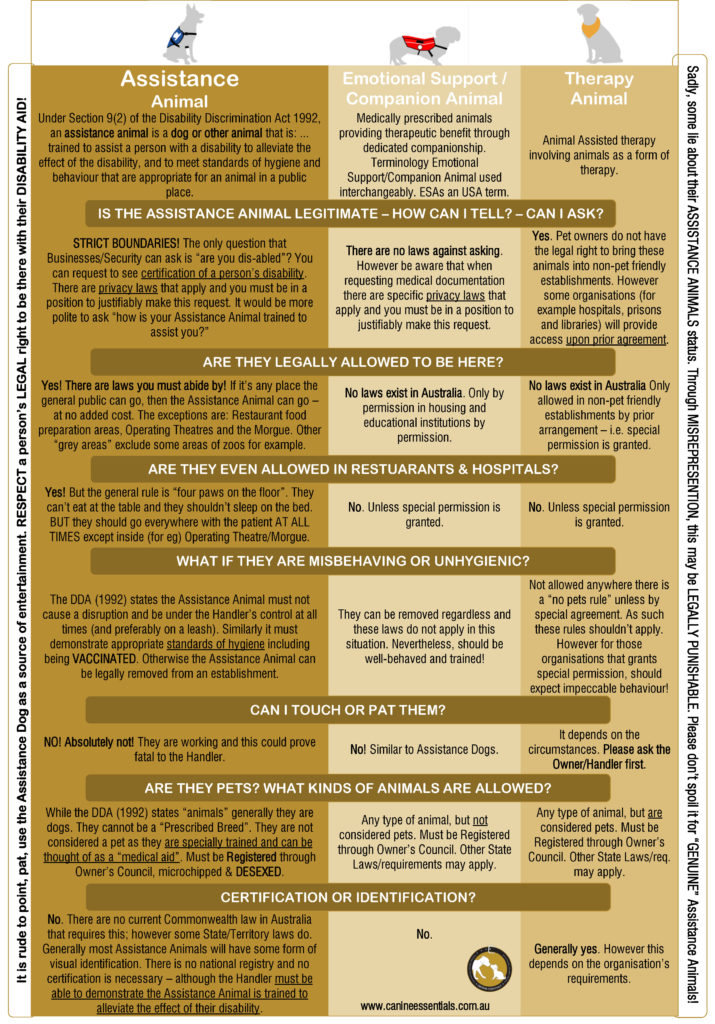 For physical conditions, it may help them move correctly and exercise often.
For physical conditions, it may help them move correctly and exercise often.
Additionally, some long-term care facilities may offer pet therapy programs to help improve the mood and general well-being of people in these facilities.
A study in Psychogeriatrics found that dog assisted therapy in long-term elderly care facilities helped reduce symptoms of depression. The research suggests that the dogs help facilitate social interaction and create positive emotional responses.
However, more research is necessary to confirm the benefits of animal therapy.
While animal therapy may be helpful for people with certain health issues, it may not be right for everyone.
Some people may be allergic to the animals that commonly play a role in therapy. Many people are allergic to the dander from a dog’s shedding, for example. For these individuals, animal therapy with a dog could cause far more harm than good.
Others may simply be uncomfortable with or afraid of the animals.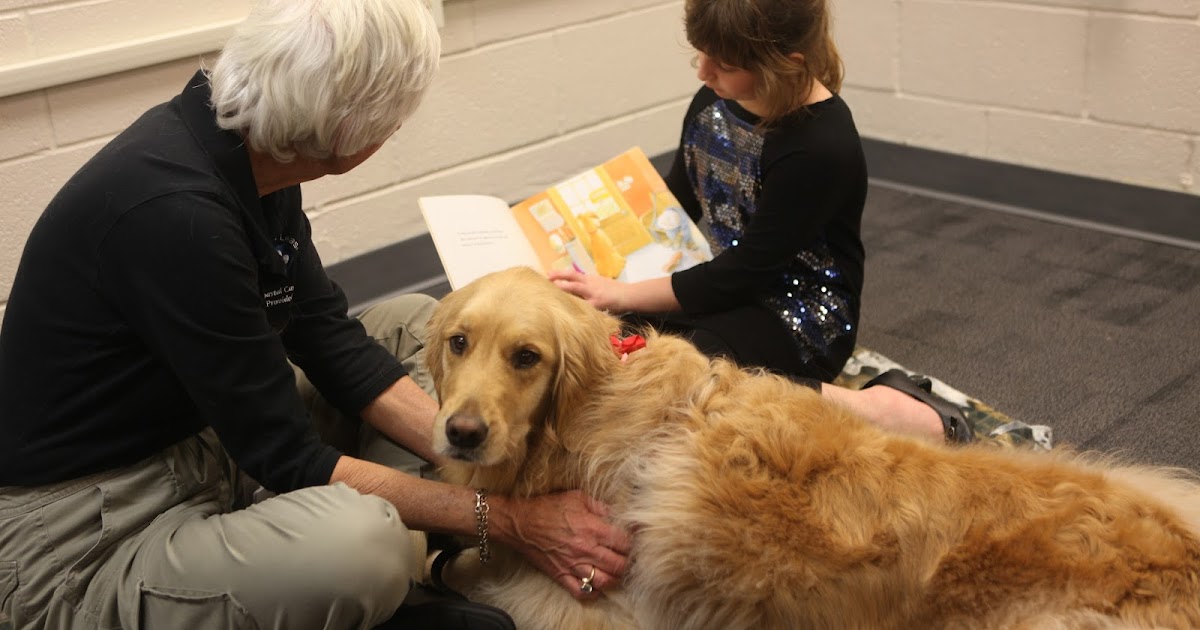 They may not choose this type of therapy as it would cause them more stress.
They may not choose this type of therapy as it would cause them more stress.
In some cases, a person may become very attached to the animal rather quickly. This feeling could lead to possessiveness or actually decrease a person’s satisfaction with therapy.
Additionally, therapy animals that visit hospitals and other long-term facilities may be carriers of certain infections or diseases. There may be a chance of them spreading these infections to other people, making thorough testing important for any animal.
Animal therapy is a complementary treatment. It is not a basis for the treatment of any condition and should only enhance or complement other treatment. It is not a replacement for other forms of therapy, such as psychotherapy or physical therapy.
This form of therapy might not suit everyone, however. People who do not respond well to animal therapy or are not interested in trying it may ask about other options. These alternatives will vary depending on the person’s condition.
Learn more about several types of therapy options here.
Animal therapy involves regular sessions with professionally trained animals and their handlers. It aims to help people cope with both physical and mental health disorders.
Doctors or mental health specialists may recommend and administer animal therapy for various conditions, with different goals in mind for each person.
Some people may not enjoy animal therapy or have other reasons to avoid it, and they can choose from alternative therapies.
Anyone considering animal therapy should discuss the process and how they may benefit from it with a doctor or mental health specialist.
How it works, benefits, and more
Animal therapy or pet therapy refers to the use of animals as a way to help people cope with and recover from some physical and mental health conditions.
Depending on the function of the therapy, people may choose from various animals, including dogs, horses, and birds. Animal assisted therapy is not the only therapeutic option in most cases, but it can be a good choice for some people.
Keep reading to learn more, including how it works, who it may benefit, and more.
Share on PinterestInteracting with professionally trained dogs, horses, and birds may help people with physical or mental health conditions.Animal therapy, also called pet therapy or animal assisted therapy, refers to various services using animals to help people with specific physical or mental health conditions.
Animals may be able to provide comfort, alert others if someone is in danger, or even perform direct actions to help a person’s condition when they are in need. It is a type of complementary or alternative therapy. It should enhance but not replace other treatments.
On the whole, the goal of animal assisted therapy is to alleviate or help people cope with some symptoms of various conditions where possible.
The exact type of animal therapy can vary greatly depending on what condition the person has, the type of animal, and what kind of therapy they provide.
Animal therapy builds on a concept called the human-animal bond, which describes people’s desire to interact with and relate to animals. For many people, by interacting with a friendly animal, they can form a bond with them. This bond can produce a calming state in the person.
For many people, by interacting with a friendly animal, they can form a bond with them. This bond can produce a calming state in the person.
This bond itself may help the person in several ways, such as:
- reducing boredom
- increasing movement and activity through walks and play
- providing companionship and decreasing loneliness
- increasing social interactions
- improving mood and general well-being
The positive interactions with an animal may lead to benefits in the mind and body, such as reduced stress and an overall more balanced mental and emotional state.
Animal therapy partially uses this bond in a directed way to achieve the goals of the therapy.
Animal therapy can have several goals, and these will determine how it works. The type of therapy and target for this therapy may change depending on the condition and the type of aid that a person needs. Some examples include:
- providing comfort and reducing levels of pain
- improving movement or motor skills
- developing social or behavioral skills
- increasing motivation toward activities such as exercise or interacting with others
The process of animal therapy itself typically involves the animal’s handler, who is often the owner, bringing the animal to each session. The handler will work under a doctor’s guidance to help the person achieve the goals of their therapy.
The handler will work under a doctor’s guidance to help the person achieve the goals of their therapy.
A number of organizations train handlers and connect them to healthcare providers. Many handlers work as volunteers. Before getting approval for therapy use, both the animal and the handler will have to go through various certifications with these groups and organizations.
The handler must generally pass an instructional course on how to interact with people and perform the types of therapies that they may provide.
The animal also has to go through certain checks. These will include checking immunization records and performing physical exams to ensure that the animal is generally healthy and free of disease. They will also have to undergo temperament testing to make sure that they behave properly with both the handler and other people.
Additionally, the pair will go through obedience training. This rigorous testing and certification ensures the safety and professionalism of everyone involved and helps give the person access to the best therapy sessions possible.
It is important to note that a therapy dog is not the same as a service dog and does not have all of the same rights. For example, a therapy dog cannot accompany a handler into a business establishment.
Animal therapy may help people with a range of health issues.
Mental health
The Pet Partners organization note that these therapies may improve many important markers of stress and disorder by:
- decreasing anxiety and stress
- decreasing perceptions of pain
- reducing feelings of fear or worry
- increasing feelings of social support
- providing motivation, stimulation, and focus
A review study notes that animal therapy appears to provide general benefits for both physical and psychological health. Evidence for animal assisted therapy appears strongest for markers of anxiety and depression in the widest range of people.
The researchers note that the therapy may be beneficial for people from many different age groups with various conditions.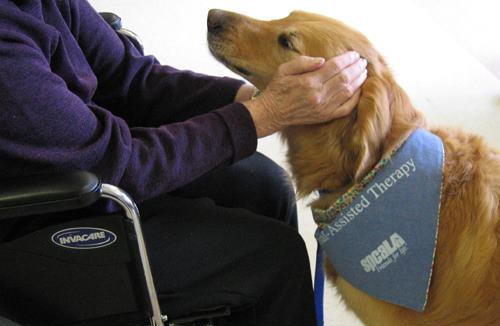 For example, a 2019 study found that the use of therapy dogs improved the efficacy of mental health treatments among adolescents.
For example, a 2019 study found that the use of therapy dogs improved the efficacy of mental health treatments among adolescents.
Together, these factors may make the therapy helpful for aspects of conditions such as:
- dementia
- depression
- anxiety
- autism spectrum disorder
- attention deficit hyperactivity disorder (ADHD)
- schizophrenia
Studies involving the use of therapy horses and dogs have shown that animal therapy might also help alleviate the symptoms of post-traumatic stress disorder (PTSD).
Some people going through rehabilitation for a drug use disorder may also respond well and have a greater sense of well-being when working with an animal.
Physical health
Some forms of animal therapy may also help with markers of physical conditions, including:
- epilepsy
- heart failure
- pain from cancer treatment
- postoperative recovery
- recovery after a major stroke or another condition that causes a person to lose motor skills
Working with an animal in these cases may motivate the person to continue therapy, boost their mood, and reduce signs of pain. For physical conditions, it may help them move correctly and exercise often.
For physical conditions, it may help them move correctly and exercise often.
Additionally, some long-term care facilities may offer pet therapy programs to help improve the mood and general well-being of people in these facilities.
A study in Psychogeriatrics found that dog assisted therapy in long-term elderly care facilities helped reduce symptoms of depression. The research suggests that the dogs help facilitate social interaction and create positive emotional responses.
However, more research is necessary to confirm the benefits of animal therapy.
While animal therapy may be helpful for people with certain health issues, it may not be right for everyone.
Some people may be allergic to the animals that commonly play a role in therapy. Many people are allergic to the dander from a dog’s shedding, for example. For these individuals, animal therapy with a dog could cause far more harm than good.
Others may simply be uncomfortable with or afraid of the animals. They may not choose this type of therapy as it would cause them more stress.
They may not choose this type of therapy as it would cause them more stress.
In some cases, a person may become very attached to the animal rather quickly. This feeling could lead to possessiveness or actually decrease a person’s satisfaction with therapy.
Additionally, therapy animals that visit hospitals and other long-term facilities may be carriers of certain infections or diseases. There may be a chance of them spreading these infections to other people, making thorough testing important for any animal.
Animal therapy is a complementary treatment. It is not a basis for the treatment of any condition and should only enhance or complement other treatment. It is not a replacement for other forms of therapy, such as psychotherapy or physical therapy.
This form of therapy might not suit everyone, however. People who do not respond well to animal therapy or are not interested in trying it may ask about other options. These alternatives will vary depending on the person’s condition.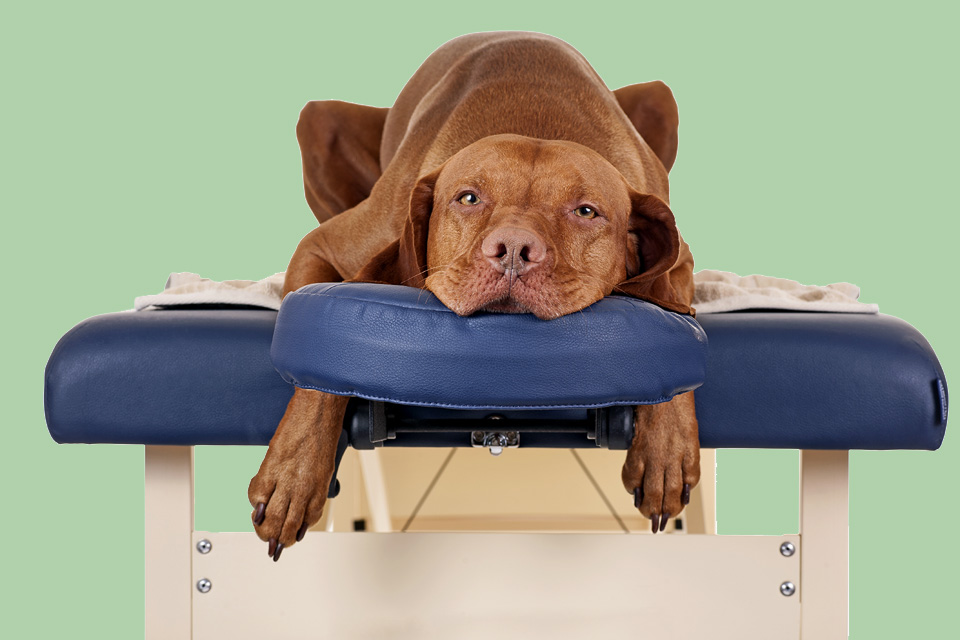
Learn more about several types of therapy options here.
Animal therapy involves regular sessions with professionally trained animals and their handlers. It aims to help people cope with both physical and mental health disorders.
Doctors or mental health specialists may recommend and administer animal therapy for various conditions, with different goals in mind for each person.
Some people may not enjoy animal therapy or have other reasons to avoid it, and they can choose from alternative therapies.
Anyone considering animal therapy should discuss the process and how they may benefit from it with a doctor or mental health specialist.
Benefits of Animals in Physiotherapy and Psychotherapy
Animal lovers don't need scientific evidence to understand that an animal can bring joy and comfort to their lives. However, many veterinarians have conducted research and compiled data to support and validate the benefits of animals in physical therapy and psychotherapy. Standards have been established for both therapy animals and animal interventions. Today, an increasing number of treatment programs are using therapies with great success in various animal species, from birds to horses.
Standards have been established for both therapy animals and animal interventions. Today, an increasing number of treatment programs are using therapies with great success in various animal species, from birds to horses.
Animal Involvement Therapy
When a physiotherapist or psychiatrist uses animal therapy or animal therapy, patient care, attention and motivation are improved. Animal-assisted therapy includes a written treatment plan explaining the specific goals, timing, and duration of therapy. The therapist documents the patient's progress in detail, recording exactly how his condition improves. For example, a patient recovering from a stroke or other illness may be more inspired to walk if you can walk your dog while exercising. Animals participating in therapy must be kind to people and undergo a medical examination.
Animal interventions
Although animal interventions often produce therapeutic results, patients interact with animals in a more informal way than in animal therapy.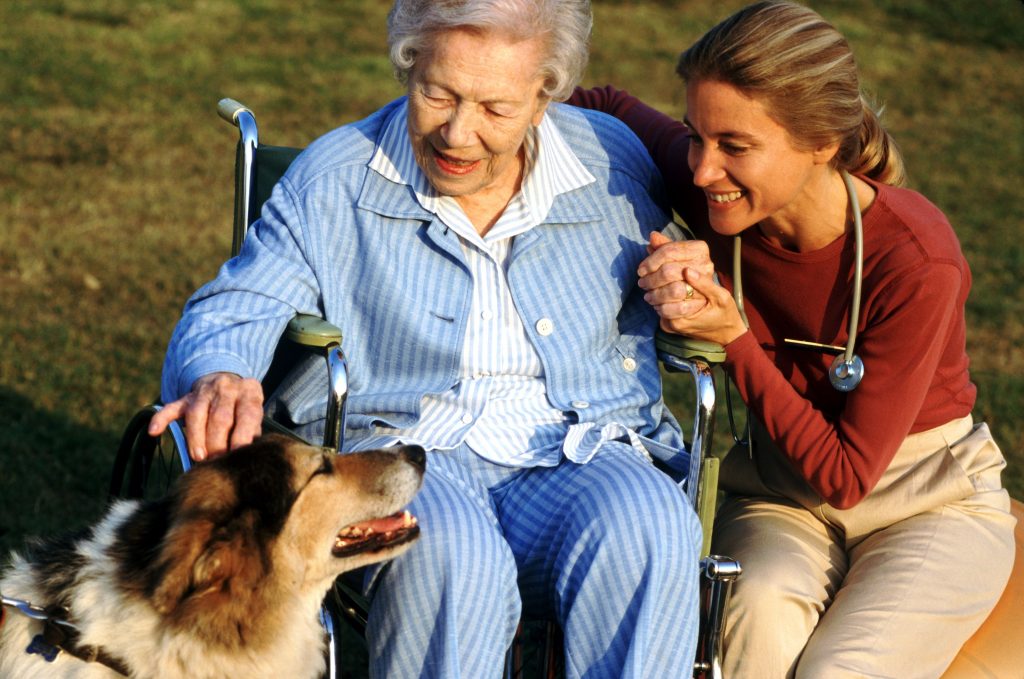 A trained volunteer or assistant can supervise visits, take notes, or make plans. Instead of working with patients one at a time, animals are brought into a group. For example, if a volunteer brings a rabbit or a Vietnamese lop-bellied pig to a nursing home or orphanage, the residents of such institutions spend time socializing with each other and petting the animals, this is an animal participation event.
A trained volunteer or assistant can supervise visits, take notes, or make plans. Instead of working with patients one at a time, animals are brought into a group. For example, if a volunteer brings a rabbit or a Vietnamese lop-bellied pig to a nursing home or orphanage, the residents of such institutions spend time socializing with each other and petting the animals, this is an animal participation event.
Physical benefits
The presence of an animal during therapy can motivate a patient at any age. As a result, animal-assisted therapy leads to measurable physical progress in patients because they will be more willing to take part in the exercises. Physical benefits include improving motor skills, both fine and gross motor skills. For example, brushing your dog improves fine motor skills, while walking improves gross motor skills. In addition, the patient usually experiences physiological changes such as decreased blood pressure and heart rate, and recovers more quickly from surgery or illness.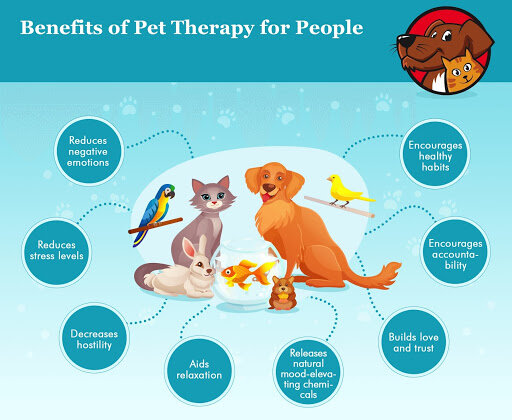
Psychological benefits
Animal-assisted therapy has a calming effect on patients due to the perceived nature of the animal. When the patient relaxes, he opens up and communicates more with the doctor and others in group therapy. Animals awaken in man educational instincts. When a patient takes care of animals, for example, feeding carrots to a rabbit, this increases his self-esteem and self-confidence. Patients can also improve their cognitive and verbal skills. For example, if a child needs to water an animal, the therapist may ask you to explain how to complete the task.
Pet therapy: how animals improve human mental health
Health
© oleg ivanov/unsplash
Author Julia Tsiruleva
October 09, 2019
Let's find out how pets help to cope with psychological difficulties, which pets are called "emotional support animals" and who is suitable for pet therapy.
Scientists believe that communication with animals - dogs, cats, horses and other pets - reduces anxiety, strengthens the nervous system and improves immunity.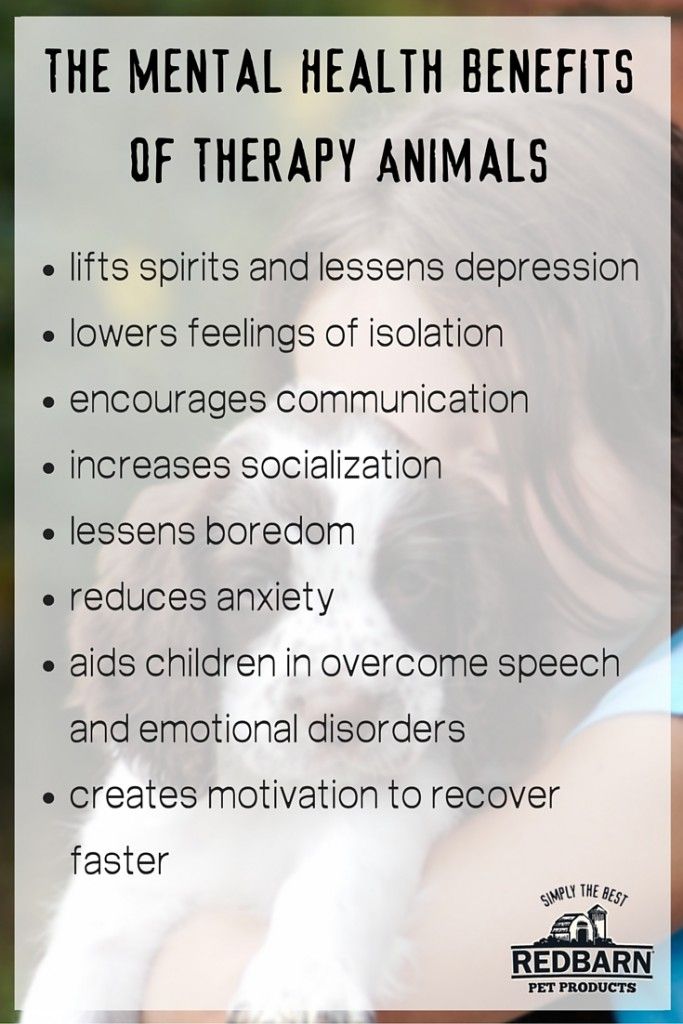 "Animals have an open mind about humans," says Dr. Henry Feldman, of the Department of Hospital Medicine at Harvard Medical School. “They just love, they help us love back and feel more confident.”
"Animals have an open mind about humans," says Dr. Henry Feldman, of the Department of Hospital Medicine at Harvard Medical School. “They just love, they help us love back and feel more confident.”
Pet therapy (from the English. pet - "pet, pet") - the participation of pets in the treatment and prevention of various diseases, from cardiovascular diseases to mental disorders. An analysis of 49 pet therapy studies confirmed the positive emotional impact of animals on patients with autism, emotional disorders, post-traumatic stress disorder (PTSD), schizophrenia, depression, and addictions. "Psychological pets" are called "emotional support animals". They differ from assistants, such as guide dogs, in that they almost do not need special training - a friendly attitude towards the person and an emotional connection between the pet and the owner are enough. Therefore, it is not necessary to buy a special animal - you can choose the one you like at the shelter. Restrictions for pet therapy are minimal: allergy to animals or fear of them.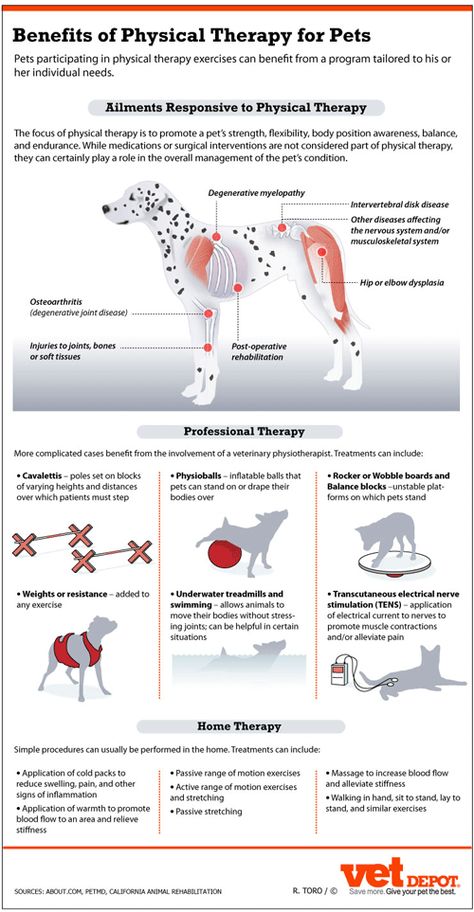
Advertising on RBC www.adv.rbc.ru
Supporters of pet therapy believe that animals help stabilize emotions, become more relaxed and calm, develop trust in others and self-confidence, improve communication, self-regulation and socialization skills.
In addition, pets relieve loneliness, reduce irritability and anger, reduce PTSD symptoms, help overcome insomnia and increase the level of joy hormones - oxytocin and endorphins.
© Adam Griffith/Unsplash
The most popular pet therapists and companions. They help to cope with depression, quickly calm down in a stressful situation, and feel protected. It is easier for dog owners to meet new people and make friends on walks - communication and friendship, according to scientists, make us happier. Emotional support can be provided by a dog of any breed and size that is friendly to people and knows basic commands.
© Fabrizio Verrecchia/Unsplash
Horses are almost as popular as dogs as therapists and in some cases outperform other animals.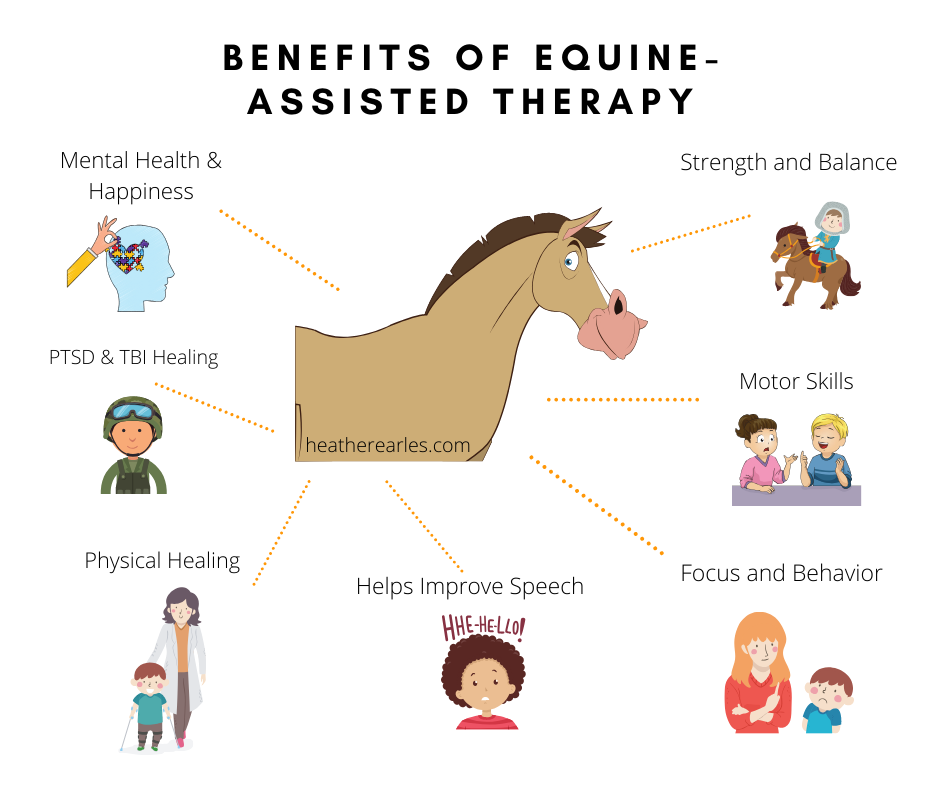 Psychotherapy with their participation is used to treat addictions, as well as help adults and children with mental disorders. Horseback riding is an optional part of therapy. To improve well-being, people can take care of horses. Communication with animals, their ability to recognize and imitate human emotions helps to cope with emotional disorders and learn trust.
Psychotherapy with their participation is used to treat addictions, as well as help adults and children with mental disorders. Horseback riding is an optional part of therapy. To improve well-being, people can take care of horses. Communication with animals, their ability to recognize and imitate human emotions helps to cope with emotional disorders and learn trust.
© oleg ivanov/unsplash
It is believed that cats are less capable of emotional support than dogs and horses. However, experts are sure that this is not the case. There is a practice of having cats in nursing homes, hospitals, schools and opening cat cafes. These animals have a calming effect on the psyche of people, help to forget about troubles and normalize sleep, because their presence creates a feeling of security, and the cat's purr relaxes and lulls. Studies show that petting a cat triggers the release of the joy hormone oxytocin. Pets are responsive, kind and sensitive to those who pay attention to them.
© Jerry Wang/Unsplash
Sometimes therapy requires a small, quiet and calm animal. In this case, experts recommend choosing a rabbit. These animals are easy to care for, they are suitable for those who, for whatever reason, cannot get a dog or cat at home. Petting rabbits helps develop and maintain fine motor skills. The only essential condition is that the animal must be socialized and enjoy being stroked.
© andy holmes/unsplash
At first glance, reptiles are not associated with animals that help solve emotional problems. However, an experiment conducted in London showed that caring for such a pet distracts a person from difficulties and unpleasant experiences. This is because caring for a reptile requires increased attention and concentration. In addition, an unusual pet often increases self-esteem - the owner gains confidence that if he is capable of complex pet care, he can succeed in any chosen field.
© Sharon McCutcheon/Unsplash
First and foremost, parrots have a high level of empathy and the ability to talk, making them excellent companions.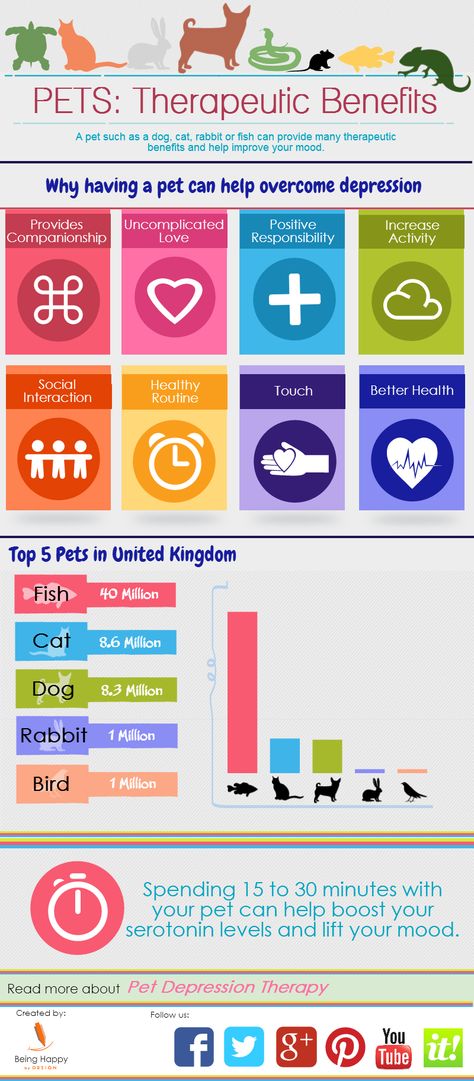 Experts suggest teaching parrots certain words and phrases that help in working through psychological difficulties. Parrots are able to help victims of violence and are better than other pets for the treatment of PTSD. In the United States, to help veterans of military operations in Iraq, the Parrots For Patriots center has been created, where every soldier who needs support can choose a bird and take care of it.
Experts suggest teaching parrots certain words and phrases that help in working through psychological difficulties. Parrots are able to help victims of violence and are better than other pets for the treatment of PTSD. In the United States, to help veterans of military operations in Iraq, the Parrots For Patriots center has been created, where every soldier who needs support can choose a bird and take care of it.
© Sophie Dale/Unsplash
A new trend that has recently emerged in Europe and then in the US is cow cuddling therapy. The American Suzanne Vullers brought world fame to this type of therapy. A year ago, Suzanne and her husband, farmers from upstate New York, offered "cow hug" sessions to everyone. Spouses try to spend no more than one or two sessions a day, so as not to tire the animals. The benefit of such hugs is that the heart rate of cows is slower than that of humans. Hugging a cow, people get the effect of relaxation and peace, similar to that which gives yoga or meditation.